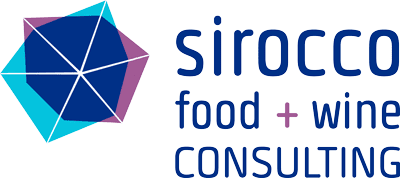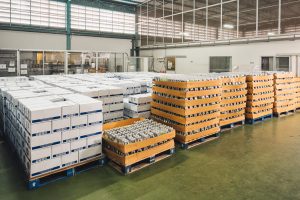Internal auditing is more than just an SQF requirement (System Element 2.5: System Verification), it’s one of the most effective tools for shaping a positive food safety culture. When done well, internal audits encourage transparency, build trust, and empower teams to solve problems together. They shift the focus from “catching mistakes” to making the workplace safer and processes stronger.
In this blog, we’ll cover 10 key strategies to use internal auditing not just to maintain SQF compliance, but to strengthen your food safety culture, drive meaningful change, and prepare your site for a certification result everyone can celebrate. Contact Sirocco Consulting today to get expert guidance and tailored support for your SQF compliance.
1. Build a Risk-Based Audit Schedule
A strong internal audit program starts with a risk-based schedule. Risk assessments are a common topic in our industry, but what does that mean in practice?
When drafting your audit schedule, cover the full SQF scope based on your FSC, but dedicate more resources and effort to areas of higher risk. Obtain management approval for your schedule. For instance, review past non-conformances (recalls, complaints, product holds), CARs (Corrective Action Reports), and process changes to determine what needs the most attention.
High-risk areas such as CCP monitoring, allergen control, or sanitation should be audited with extra care. This targeted approach builds confidence that your most critical risks are under control.
2. Ensure Auditors Are Trained and Independent

Your internal auditors are culture champions. Train them not only on SQF and HACCP requirements, but also on communication, objectivity, and coaching skills.
Auditors should be independent from the areas they audit to ensure credibility and impartiality, a key factor for both system compliance and employee trust.
3. Prepare Audit Guides to Coach New Auditors
Audit guides help maintain consistency and build confidence among your audit team. Include:
- SQF reference materials such as tip sheets and guidance documents
- Process-specific audit roadmaps
- SQFI audit checklist to document the audits
- Share advice to encourage open conversation during employee interviews
This approach turns audits into collaborative problem-solving sessions rather than stressful interrogations.
4. Include Thorough Site Inspections
A positive food safety culture thrives on visibility. Walk the floor regularly as part of your annual audit cycle.
Observe outside grounds and less-traveled areas that may present food safety or food defense risks. For example, ask that locked rooms be opened during inspections. Review contamination risks and invite employees to share concerns.
When employees see leaders and auditors taking action on what they observe, it strengthens trust and reinforces a positive food safety culture.
5. Strengthen CAPA and Embrace Change Management
Corrective and Preventive Actions (CAPA) are at the heart of continuous improvement. Train your team to perform strong root cause analysis and implement lasting solutions.
Treat change management as a process rather than a one-time fix. Involve affected employees, communicate changes clearly, and follow up to ensure adoption. CAPA should be applied to all non-conformances identified during internal audits.
Make CAPA and RCA training part of your food safety culture objectives to build a mindset of continuous improvement.
6. Give Internal Auditors a Role in Closing CARs

Internal auditors can do more than identify problems, they can verify that corrective actions are effective.
As part of your follow-up audits, have auditors check whether the root cause has truly been eliminated. This reinforces accountability and closes the loop on improvement efforts. It also helps your audit team see the full Plan-Do-Check-Act (PDCA) cycle in action, deepening their understanding of the SQF system.
7. Obtain Management Support and Engagement
Top-down support is essential. Management should not only review audit results but also act as visible champions of food safety.
Their commitment sets the tone for a culture where audits are valued and CARs are seen as opportunities for growth rather than punishment. This engagement strengthens your site’s food safety culture maturity, which is a critical part of your yearly management objectives to manufacture safe food for customers.
8. Include Internal Audits in Food Safety Culture Goals
Tie your audit program directly to your food safety culture objectives. Celebrate improvements, share success stories during team “Show and Tell” sessions, and demonstrate how employee participation leads to better outcomes.
This approach helps everyone feel like they are part of the solution.
9. Review Supplier Audit Reports

Your food safety culture extends beyond your own facility. A strong supplier program is crucial to achieving positive outcomes.
When auditing your supplier management files, request and review supplier third-party audit reports (sign NDAs if necessary) to confirm that your supply chain meets SQF standards. Share findings internally so teams understand how supplier performance impacts your site’s compliance.
10. Use Internal Audits as a Dress Rehearsal and Communicate Results
Treat every internal audit as a practice run for your SQF recertification or surveillance audit. Apply the same rigor:
- Hold formal opening and closing meetings
- Invite management and record attendance
- Document everything carefully
Then, share results with employees and incorporate audit findings into refresher training on SQF, HACCP, and CCPs. Turning findings into teaching moments strengthens both knowledge and engagement.
Key Takeaways
Internal auditing is one of the most powerful drivers of food safety culture when approached as a collaborative, improvement-focused process.
By building a risk-based schedule, involving management, training auditors, and following through on CARs under CAPA, your site will do more than “pass the audit”, it will build a stronger, safer, and more resilient food safety management system.
References
SQF Tip Sheets, Audit Checklist, Guidance documents
Since 2014, Sirocco Food + Wine Consulting has helped small food and medium food and beverage manufacturers achieve SQF certification. Our multilingual team of SQF professionals (English, French, Spanish, Vietnamese and Chinese) assists you with remote and onsite gap assessments, internal audits and effective corrective action responses. Contact us to schedule a free consultation.





